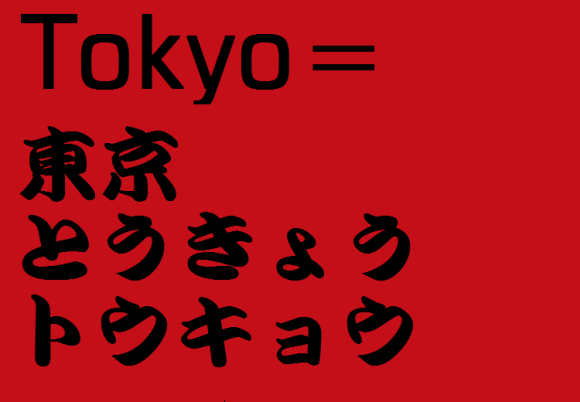
No, it’s not because the Japanese language hates you.
So if you wanted to write, say, Tokyo, in Japanese, you’d write it like this.
Oh, wait, you could also write it like this.
And, finally, this, too, is an option.
Yes, it’s true. Japanese has three completely separate sets of characters, called kanji, hiragana, and katakana, that are used in reading and writing. That first rendering of “Tokyo” is in kanji, with the hiragana version next, and the katakana one at the bottom.
The reason for this triple threat to language learners’ sanity isn’t that teachers of Japanese want to lessen their workload by convincing you to study Spanish instead. There’s actually a fairly logical, slightly lengthy explanation for using all three, so pour yourself a cup of green tea and let’s dive right in.
▼ Into the explanation, of course (unless you’ve got a very big teacup).
First, let’s take a look at kanji, which are complex characters, originally coming from Chinese, that represent a concept. For example, kuruma, the Japanese word for “car,” is written in kanji as 車.
▼ 車!
Hiragana, though, are much simpler in both form and function. They take fewer strokes to write than all but the simplest kanji, and instead of representing concepts, hiragana are used for writing phonetically. In other words, hiragana characters function like English letters, in that they don’t have any intrinsic meaning. They just represent sounds.
Because of this, any Japanese word that can be written in kanji can also be written in hiragana. Kuruma, which we saw written in kanji as 車, can also be written in hiragana as くるま, with those three hiragana correlating to the sounds ku, ru, and ma.
▼ くるま!
So why do sentences have a mixture of kanji and hiragana? Because hiragana gets used for grammatical particles and modifiers. Remember, each kanji represents a concept. So when writing a verb, you use a kanji for the base concept, then hiragana to alter the pronunciation and add more meaning, such as the tense.
For instance, the verb miru, meaning “see,” is written 見る, combining the kanji 見 (read mi) with the hiragana る (ru). If you wanted to change that to the past tense, mita/saw, you’d leave the kanji as-is and replace the る with the hiragana た (ta) to get 見た/mita, which means “saw.”.
But wait, if anything that can be written in kanji can also be written in hiragana, why not use only hiragana? After all, while the complete set of 46 hiragana is bigger than the 26-letter English alphabet, it’s still way more manageable than the 2,000 or so regular-use kanji, the collected group that serves as the litmus test for full adult Japanese literacy.
Actually, there are three pretty solid arguments against writing exclusively in hiragana.
1. Because kanji were developed before hiragana, writing with kanji generally imparts a more educated and mature feeling. Sure, you could write kuruma as くるま and be understood, but it’ll look childish to Japanese readers, so adults are expected to go with 車.
2. Still, if everyone in Japan did it, eventually the childish stigma of using only hiragana would fade away, just like if humanity collectively decides that, starting tomorrow, chocolate milk is a perfectly acceptable beverage to serve/request at formal business meetings.
▼ Come on, people, together we can do this!
But Japanese has a very limited number of sounds. Aside from famously having no L, very few consonants can be blended together, and every syllable has to end in a vowel or N. Because of this, the Japanese language is filled with words that are pronounced the same but have different meanings.
As a matter of fact, there are so many homonyms that without kanji, it can be confusing to tell which one is being written about. Sure you could write koutai in hiragana as こうたい, but koutai can mean “replacement,” “antibody,” or “retreat.” Because of that, if you want to get your point across, you’re much better off using kanji, 交代, 抗体, or 後退, to clarify which koutai you’re writing about.
3. Japanese writing doesn’t put spaces, at all, between different words. This sounds like it would have the potential to turn every sentence into a confusing mass of congealed language bits, but written Japanese tends to fall into patterns where kanji and hiragana alternate, with the kanji forming base vocabulary and the hiragana giving them grammatical context.
For example, here’s Watashi ha kuruma wo mita, or “I saw the car,” written with the customary mix of kanji and hiragana.
Right away, we can see the pattern of kanji-hiragana-kanji-hiragana-kanji-hiragana, which quickly tells us we have three basic ideas in the sentence.
1. 私は: Watashi (I) and ha (the subject marker)
2. 車を: kuruma (the car) and wo (the object marker)
3. 見た: mi– (the verb “see”) and -ta (marking the verb as past tense)
Without the mix of kanji and hiragana, those breaks would be a lot harder to spot. Here’s how it would look in all hiragana
▼ Writing everything in hiragana also takes a lot more space.
Suddenly, it’s a lot more difficult to tell where one idea stops and another starts, since it’s all one unbroken string of hiragana. Trying to read something written only in hiragana is kind of like tryingtoreadEnglishsentenceswrittenlikethis. The rhythm that comes from having a mix of kanji and hiragana, though, makes written Japanese an intelligible way of conveying ideas instead of a mad dash to the finish line.
Speaking of finish lines, we’ll be back again soon with this topic’s thrilling conclusion, in which we tackle the mysterious lone wolf outsider of Japanese writing: katakana, the third and final form of Japanese text.
▼ ウォーン!
Follow Casey on Twitter, where he sometimes tweets about how much he misses his 車.
Chocolate milk image: Wikipedia/BotMultichillT
Wolf image: Wikipedia/Retron
All other images ©RocketNews24




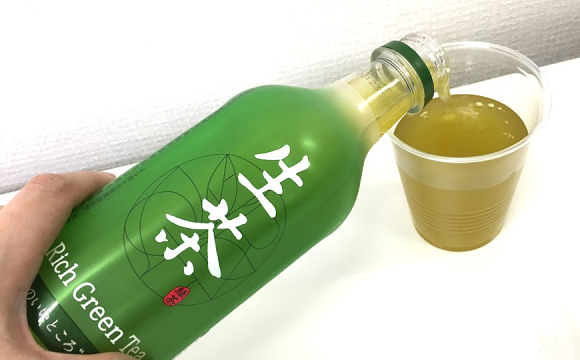
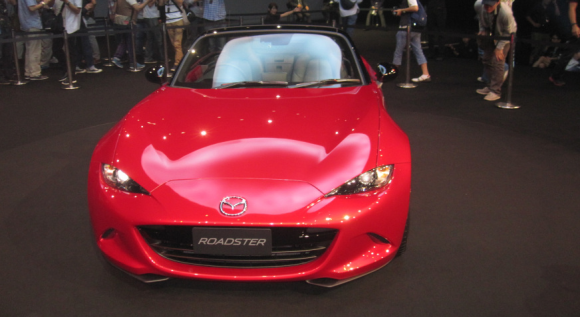
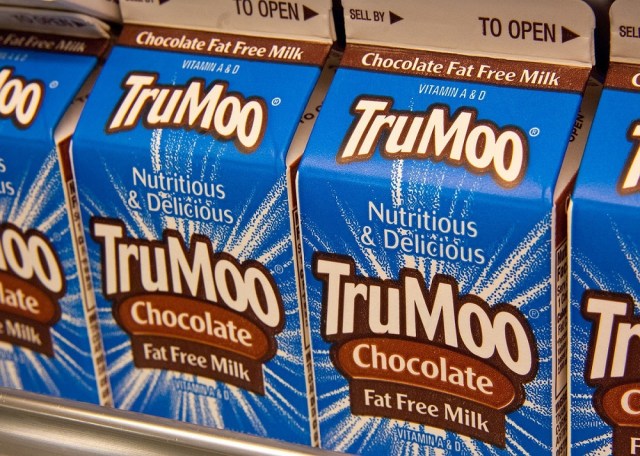


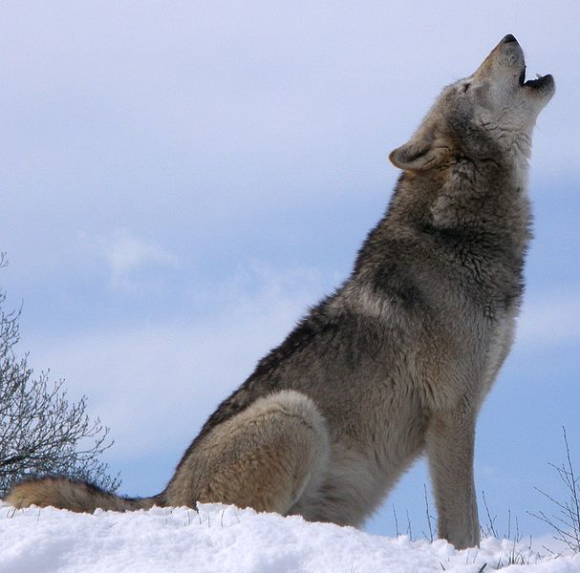
 Why does Japanese writing need three different sets of characters? (Part 2)
Why does Japanese writing need three different sets of characters? (Part 2) Why are some types of Japanese rice written with completely different types of Japanese writing?
Why are some types of Japanese rice written with completely different types of Japanese writing? Japanese writing system gets turned into handsome anime men with Hiragana Boys video game
Japanese writing system gets turned into handsome anime men with Hiragana Boys video game One simple kanji character in super-simple Japanese sentence has five different pronunciations
One simple kanji character in super-simple Japanese sentence has five different pronunciations Japanese study tip: Imagine kanji characters as fighting game characters, like in this cool video
Japanese study tip: Imagine kanji characters as fighting game characters, like in this cool video Disillusionment at Tsukiji’s tourist-target prices led us to a great ramen restaurant in Tokyo
Disillusionment at Tsukiji’s tourist-target prices led us to a great ramen restaurant in Tokyo Why you shouldn’t call this food “Hiroshimayaki” if you’re talking to people from Hiroshima
Why you shouldn’t call this food “Hiroshimayaki” if you’re talking to people from Hiroshima Starbucks Japan releases new zodiac chilled cup drink for 2026
Starbucks Japan releases new zodiac chilled cup drink for 2026 Starbucks on a Shinkansen bullet train platform: 6 tips for using the automated store in Japan
Starbucks on a Shinkansen bullet train platform: 6 tips for using the automated store in Japan 54-year-old Japanese woman stops armed robbery at her convenience store with her brute strength
54-year-old Japanese woman stops armed robbery at her convenience store with her brute strength Large amount of supposed human organs left in Osaka marketplace
Large amount of supposed human organs left in Osaka marketplace A Japanese dating app matched our bachelorette with a Buddhist monk, and she learned some things
A Japanese dating app matched our bachelorette with a Buddhist monk, and she learned some things Evangelion creator Hideaki Anno opens up about his latest bout with depression, movie delays
Evangelion creator Hideaki Anno opens up about his latest bout with depression, movie delays This hot springs town in Japan sets fire across a mountain every winter in a beautiful tradition
This hot springs town in Japan sets fire across a mountain every winter in a beautiful tradition Princesses, fruits, and blacksmiths: Study reveals the 30 most unusual family names in Japan
Princesses, fruits, and blacksmiths: Study reveals the 30 most unusual family names in Japan 7-Eleven Japan starts new temporary luggage storage service in over 300 branches
7-Eleven Japan starts new temporary luggage storage service in over 300 branches Starbucks teams up with 166-year-old Kyoto doll maker for Year of the Horse decorations【Photos】
Starbucks teams up with 166-year-old Kyoto doll maker for Year of the Horse decorations【Photos】 Tokyo’s Tsukiji sushi neighborhood asks tour groups to stay away for the rest of the month
Tokyo’s Tsukiji sushi neighborhood asks tour groups to stay away for the rest of the month Street Fighter Hadouken Churros to be launched and eaten in Tokyo, Okami pudding on offer too
Street Fighter Hadouken Churros to be launched and eaten in Tokyo, Okami pudding on offer too Japanese avoiding domestic travel as foreign tourists increase, possibly creating vicious cycle
Japanese avoiding domestic travel as foreign tourists increase, possibly creating vicious cycle Japanese woman mistaken for bear
Japanese woman mistaken for bear Return of Totoro sequel short anime announced for Ghibli Park
Return of Totoro sequel short anime announced for Ghibli Park Is this the most relaxing Starbucks in Japan?
Is this the most relaxing Starbucks in Japan? More Shinkansen trains being added to Japan’s “golden route” to meet traveler demand
More Shinkansen trains being added to Japan’s “golden route” to meet traveler demand Japan’s human washing machines will go on sale to general public, demos to be held in Tokyo
Japan’s human washing machines will go on sale to general public, demos to be held in Tokyo Starbucks Japan unveils new Christmas goods and a rhinestone tumbler that costs 19,500 yen
Starbucks Japan unveils new Christmas goods and a rhinestone tumbler that costs 19,500 yen Japanese train company is letting fans buy its actual ticket gates for their homes
Japanese train company is letting fans buy its actual ticket gates for their homes Is China’s don’t-go-to-Japan warning affecting tourist crowds in Tokyo’s Asakusa neighborhood?
Is China’s don’t-go-to-Japan warning affecting tourist crowds in Tokyo’s Asakusa neighborhood? The 10 best day trips from downtown Tokyo【Survey】
The 10 best day trips from downtown Tokyo【Survey】 Tokyo considering law requiring more trash cans following litter increase in heavily touristed area
Tokyo considering law requiring more trash cans following litter increase in heavily touristed area Nintendo’s Kirby now delivering orders at Kura Sushi restaurants, but not in Japan
Nintendo’s Kirby now delivering orders at Kura Sushi restaurants, but not in Japan Survey asks foreign tourists what bothered them in Japan, more than half gave same answer
Survey asks foreign tourists what bothered them in Japan, more than half gave same answer Japan’s deadliest food claims more victims, but why do people keep eating it for New Year’s?
Japan’s deadliest food claims more victims, but why do people keep eating it for New Year’s? We deeply regret going into this tunnel on our walk in the mountains of Japan
We deeply regret going into this tunnel on our walk in the mountains of Japan Studio Ghibli releases Kodama forest spirits from Princess Mononoke to light up your home
Studio Ghibli releases Kodama forest spirits from Princess Mononoke to light up your home Major Japanese hotel chain says reservations via overseas booking sites may not be valid
Major Japanese hotel chain says reservations via overseas booking sites may not be valid Put sesame oil in your coffee? Japanese maker says it’s the best way to start your day【Taste test】
Put sesame oil in your coffee? Japanese maker says it’s the best way to start your day【Taste test】 The top 10 annoying foreign tourist behaviors on trains, as chosen by Japanese people【Survey】
The top 10 annoying foreign tourist behaviors on trains, as chosen by Japanese people【Survey】 No more using real katana for tourism activities, Japan’s National Police Agency says
No more using real katana for tourism activities, Japan’s National Police Agency says Starbucks Japan reveals new sakura drinkware collection, inspired by evening cherry blossoms
Starbucks Japan reveals new sakura drinkware collection, inspired by evening cherry blossoms What does a kanji with 12 “kuchi” radicals mean? A look at weird, forgotten Japanese characters
What does a kanji with 12 “kuchi” radicals mean? A look at weird, forgotten Japanese characters Why is the Japanese kanji for “four” so frustratingly weird?
Why is the Japanese kanji for “four” so frustratingly weird? Foreigners in Japan vote for the best-looking katakana character
Foreigners in Japan vote for the best-looking katakana character How to write “sakura” in Japanese (and why it’s written that way)
How to write “sakura” in Japanese (and why it’s written that way) How to tell Japanese’s two most confusing, nearly identical characters apart from each other
How to tell Japanese’s two most confusing, nearly identical characters apart from each other The extremely violent backstory of how to write the word “take” in Japanese
The extremely violent backstory of how to write the word “take” in Japanese Brain Gymnastics Quiz: Move one matchstick to create the name of a Japanese Prefecture
Brain Gymnastics Quiz: Move one matchstick to create the name of a Japanese Prefecture Video of each Japanese hiragana getting “measured up” is oddly cute and satisfying【Video】
Video of each Japanese hiragana getting “measured up” is oddly cute and satisfying【Video】 Discrimination fears lead Japanese genetics society to replace words for dominant, recessive gene
Discrimination fears lead Japanese genetics society to replace words for dominant, recessive gene German linguist living in Japan says kanji characters used for Germany are discriminatory
German linguist living in Japan says kanji characters used for Germany are discriminatory The top 70 words that keep showing up in Japanese light novel titles (and yes, isekai is one of them)
The top 70 words that keep showing up in Japanese light novel titles (and yes, isekai is one of them) Learn Japanese through ridiculous manga: Two Piece 【Episode #1】
Learn Japanese through ridiculous manga: Two Piece 【Episode #1】 Six (and a half) essential resources for learning Japanese
Six (and a half) essential resources for learning Japanese Why Does Engrish Happen in Japan? – Breakfast buffet edition
Why Does Engrish Happen in Japan? – Breakfast buffet edition Japanese teacher shares surprising reason why the kanji for crow has one less line than bird
Japanese teacher shares surprising reason why the kanji for crow has one less line than bird
Leave a Reply